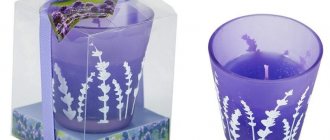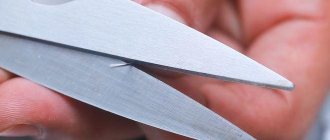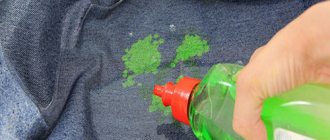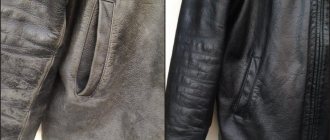What do we dissolve wax in? Almost every person interested in beekeeping products is interested in this issue. Indeed, wax is a complex substance that is soluble in a small amount of liquids. In one of the articles we looked at wax hydrolysis - this topic is also related to our topic today. Today we will talk about what to dissolve beeswax in and how to do it correctly. Several unexpected liquids for dissolving wax - read the next article on.
Thermal properties
In its natural form, wax occurs in a solid state. The material becomes plastic at temperatures above 35 degrees. There are many options for dissolving wax. This is not a problem, because when cooled it returns to a solid state.
A temperature of 60–80 degrees is sufficient to turn the wax into liquid. At 100 degrees, the wax boils and foam appears on the surface of the molten liquid. This way the substance gets rid of water, which is naturally present in the structure of the material.
Temperatures above the boiling level bring the wax to destruction, which is why some of its elements begin to break down. This means that if the wax is dissolved to such a state, the material will no longer be able to return to its original form. Wax begins to burn at temperatures above 300 degrees.
Methods
At home, melting paraffin in a water bath is the easiest way. It can be applied anywhere. Having previously crushed the material, pour it into a small container. We place the container in another bowl with water, of a larger diameter, water, in a larger diameter bowl, bring it to a boil, continuously stir the petroleum wax. The process takes 7-10 minutes. You can strain the raw materials.
In the microwave
Every home has a microwave. Melting paraffin with such a device is not difficult. Place finely chopped pieces of material in a bowl designed for microwaves and turn on the desired mode. It is better to cover the container with wax with a cloth, there may be splashes. A steamer is also a good option. Pour some water into the bottom of the steamer, put paraffin into a heat-resistant dish, and set the timer to no higher than 100 degrees.
On alcohol
Petroleum wax does not dissolve well in cold alcohol. To prepare the mixture at home, heat the alcohol and paraffin, mix, and heat again over very low heat. Bring the liquid to a uniform shape. You can fill the raw material with chloroform and let it sit for several hours. The principle of cooking with turpentine is the same as when cooking with alcohol. The only difference is that turpentine must be added gradually and in small portions.
In gasoline
The first method: take three parts paraffin and one part gasoline. We cut the purified wax into small pieces and pour it into a special bowl. Fill with gasoline until the paraffin disappears. Infuse the mixture for two days. Second option: cut the product into the smallest pieces, place it in a water bath preheated to 70 Gy. When the paraffin begins to melt, carefully pour in gasoline in small portions. Mix the finished mixture well and close tightly.
Prepared mixtures based on alcohol and turpentine can be used for medicinal purposes. It helps well with pain in the limbs, in cosmetics, overseas new products can easily replace it. According to all the rules, the prepared composition using gasoline is suitable for polishing furniture. It would be a good idea to polish your car with a mixture of gasoline. It will shine like new. The main thing is to follow fire safety rules when preparing mixtures with sparta and gasoline. take care of yourself
Chemical features
The material is insoluble in water and glycerin. Its solubility in alcohol is also low, so before dissolving the wax, you need to prepare the necessary ingredients for this process.
To ensure good dissolution of the substance, you will need heated essential oils: paraffin, turpentine, gasoline, chloroform or ether. Each of these elements at a certain temperature begins to affect the wax and dissolve it.
They also recommend using heated alcohol. But here you need to be careful, before dissolving the wax using this method, you need to check its naturalness. If there are no additional substances in the composition, the material will dissolve quickly. If there are other elements there, this can lead to the destruction of the components of the substance, as well as the impossibility of returning to its original state.
How to prepare paraffin emulsion in water
How to prepare paraffin emulsion in water
Post by regent » Tue May 16, 2006 4:42 pm
Re: How to prepare paraffin emulsion in water
Post by amik » Tue May 16, 2006 7:18 pm
Re: How to prepare paraffin emulsion in water
Post by Mendeleev » Tue May 16, 2006 8:47 pm
I will add that if you mix not with a mixer, but with ultrasound, you can get an awesome emulsion (this is how you get an emulsion of mercury in water), although I very much doubt that you will have a similar installation.
PS Once I wanted to buy one for myself, I called a company that sells various ultrasonic equipment, I asked the guy how much it cost - “Expensive pleasure.” When I found out what “Dear pleasure” meant, I decided - why do I need it? I'd rather buy myself a normal scale.
Re: How to prepare paraffin emulsion in water
Post by amik » Tue May 16, 2006 9:01 pm
Re: How to prepare paraffin emulsion in water
Post by regent » Tue May 16, 2006 9:39 pm
Guys, THANK YOU SO MUCH for the advice, I’ll try to stir it.
On the Internet I found a company that produces paraffin emulsion industrially. The preparation method is not described, but the characteristics are given: Anionic paraffin emulsion in water, paraffin 60%, milky-white liquid, density 0.93-0.95 kg/l, acidity 8.5-9.5pH, paraffin particle size 0, 6-1 micron, storage +5C - +40C
Maybe these characteristics will somehow clarify the cooking method?
Post by Mendeleev » Wed May 17, 2006 1:31 am
Post by ISN » Wed May 17, 2006 10:56 am
Post by ttt » Wed May 17, 2006 12:43 pm
Post by amik » Wed May 17, 2006 12:49 pm
Re: How to prepare paraffin emulsion in water
Post by Sovetnik » Wed May 17, 2006 1:42 pm
regent wrote: paraffin particle size 0.6-1 microns, storage +5C - +40C
Maybe these characteristics will somehow clarify the cooking method?
Post by regent » Thu May 18, 2006 12:21 am
Post by regent » Thu May 18, 2006 12:23 am
Sodium stearate is laundry soap.
They are dipped into potassium alum, if I'm not mistaken, to destroy the emulsion (direct emulsions are destroyed by multiply charged ions).
Post by Iskander » Thu May 18, 2006 9:16 am
—— They are dipped in potassium alum, if I’m not mistaken, in order to destroy the emulsion (direct emulsions are destroyed by multiply charged ions). ——
Substance classification
There are several types of wax, each of which has its own advantages. The most popular options are:
- Kapanets wax, which does not contain emulsified water, which makes the material quite durable and hard. Melting point is higher than regular wax. It has good characteristics in purity, color and quality. Used for making medicines. There are few options for dissolving natural wax of this type; in this case, the use of essential oils would be optimal.
- Beeswax is from the category of ordinary beeswax. It is used for making foundation and in the food industry. The material is more plastic and melts faster.
- Wax obtained by processing apiary merva at high temperatures. The primary qualities of the wax are lost, which is reflected in a cloudy color and uneven texture. Can be used as a material for creating foundation. It is not difficult to dissolve the wax to a liquid state; you need to heat it to a temperature of 60 degrees.
- Extraction wax is obtained by processing raw materials and extracting the main component. Gasoline may be used in the process. This wax can only be used for industrial purposes.
The choice of wax determines in which industry the material will be used. This is worth considering, as well as the technical characteristics of each type.
Application of bleached wax
In the cosmetics and perfume industries, beekeeping products are used to obtain essential oils, which are not inferior in quality to jasmine and rose. Wax is included in mascara, lipstick, cream, face mask, deodorant, shampoo and balm for body and hair.
In medicine, raw materials are used to treat skin diseases, stomach ulcers and gum diseases (stomatitis, periodontal disease). The raw material helps with spastic colitis, bronchial asthma and sinusitis. In folk medicine, natural wax is used to combat varicose veins and lupus, and is used to speed up the healing of burned skin. In the national economy, wax is used to preserve fruits and vegetables.
Background of creation
Wax is considered one of the mass products in beekeeping, which is also actively used in agriculture. Bees accumulate wax during their life processes. Over time, the walls of the honeycomb begin to darken, the cells become smaller, and enough of this substance appears on the surface to be released.
By the darkness of the honeycomb, you can determine the quality of the wax and the presence of additional substances and elements inside. During the process of material release, the proportion of wax is minimal. Although it depends on how to dissolve the wax and what methods are used for this.
Pure beeswax can be obtained by melting down the wax-containing material and further filtering it. On an industrial scale, this is done quite easily thanks to special filters. In agriculture, such purification is carried out only by numerous meltings.
Some good advice
Now readers know how to melt wax, but in order for the process to be carried out correctly and without violating technology, you need to familiarize yourself with the advice of professionals:
- The water for melting bee products in it must be soft and well purified.
- If wax is melted from old honeycombs, then you need to pay special attention to its complete cleaning.
- Correct temperature conditions and maintaining cooling time improve the quality of the final product.
- Before choosing a melting method, you need to decide for what purpose the wax will be used.
Remember that for cosmetic purposes or for sale, this unique product of the vital activity of a swarm of bees must have high-quality cleaning and a uniform color without defects.
Primary raw materials
Before wondering how to dissolve the wax to a liquid state, you need to think about what to use as the primary raw material. These can be wax trimmings that are collected after trimming honeycombs in apiaries. The honeycombs themselves are also used, which are already full and difficult to clean.
By cleaning, you can get about 70 percent of the wax from the total mass on the comb. It is used for melting both the bar and the waxy material from the honeycomb that remains on the surface after eating honey.
Heating at the stake
The metal container in which they plan to melt the wax is placed over the fire. It should be large - the volume should be enough for a whole bucket of water. Place the raw materials into the container. In this case, there must be a reserve, since when heated, the wax frames will boil and the water will bubble.
When the mixture boils, you need to stir it regularly. After complete melting, the mass is stirred, dirt is removed, and allowed to cool. You can cool the mass in the same container or pour it into another, clean one.
How wax is melted over a fire is shown in this video:
Recycling options
The most popular option is the solar wax melter, which produces a high-quality product. This is a good option. And is the answer to how you can dissolve wax to a liquid state. Thanks to sunlight, it quickly clarifies and natural filtration occurs. Steam wax melting is gaining popularity, but interaction with water can negatively affect the concentration of the product itself.
How to dissolve wax or paraffin? This can be done using water melting, due to which, as a result, most of the filtered wax floats to the surface, from where it is immediately collected. The advantage of the method is that in the end it is obtained in a plastic state, and it is easy to give it the desired shape until it cools completely.
Removal from hard surfaces
Wax stains can remain on hard surfaces - furniture, glass, floors, walls. In this case, it is easiest to get rid of them. To clean hard surfaces, you need to prepare a plastic knife or spatula and ice in a bag.
Initially, cool the top layer of the stain well and carefully remove the fragile wax with a plastic knife or spatula. Then this place needs to be wiped with polish or glass washing liquid (depending on the surface where the wax got on). There will be no traces left.
- A stain on the wall can be removed with a pencil eraser or a kneading eraser.
- This works for regular and colored wax.
- If necessary, if the coating allows, the area on the wall can be wiped with a solution of soda and water (in a ratio of 1:3).
- The same solution can be used to remove stains from fabrics and carpets.
Use of leftovers
Wax can be used in a variety of ways:
- For medical purposes.
- For making homemade skin and nail care products.
- On waxing. Moreover, in this case you don’t have to worry about the naturalness of the composition used. But, it is very important to make sure that there is no allergic reaction on the part of the body to this component of bees.
- For painting batik. In this case, reheated products are used to bind the pigment and make it durable on the fabric.
- To make your own shoe polish. But in this case, if pigments are not added to it, then it will not be able to give a certain shade to leather products. But with its help you can increase the intense shine.
- To protect working tools.
- Wood can also be processed with this component.
- Polished wooden furniture, which has a sanded smooth surface, can also be treated with the melted component of bee products.
- Some craftsmen use this substance to color Easter eggs.
In this way, you can obtain the desired consistency of the bee product, clean it and melt it.










